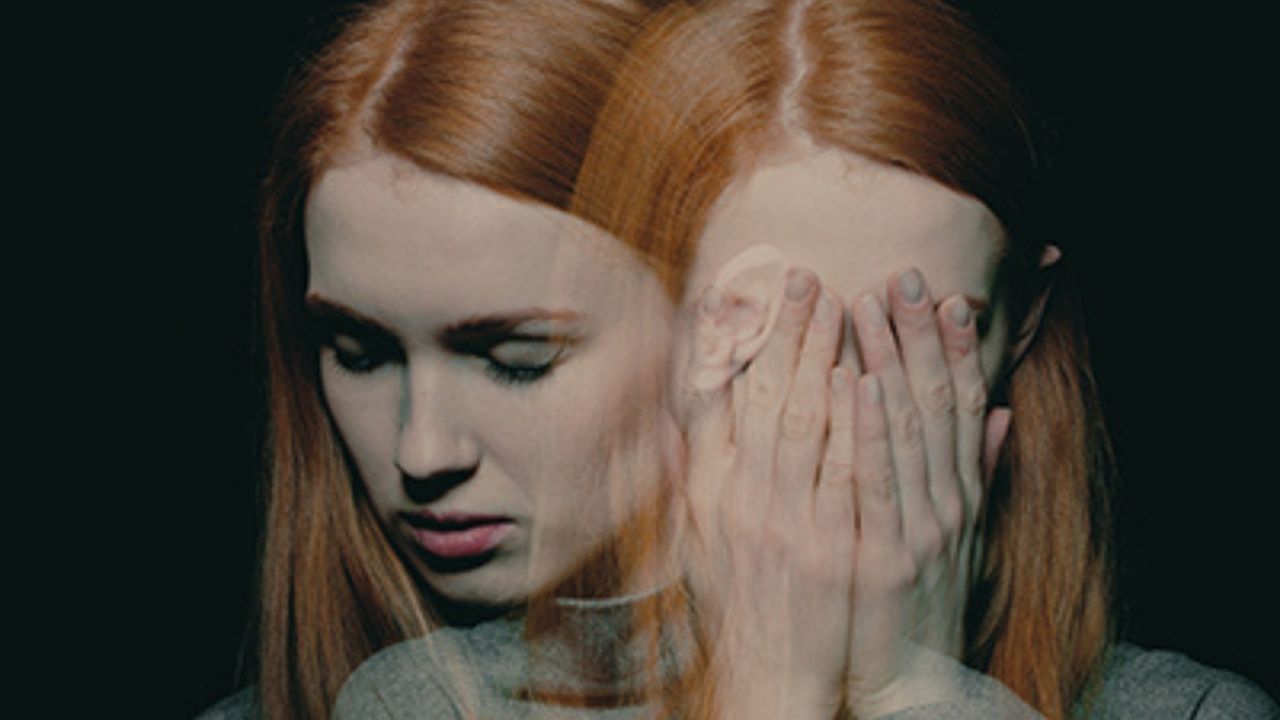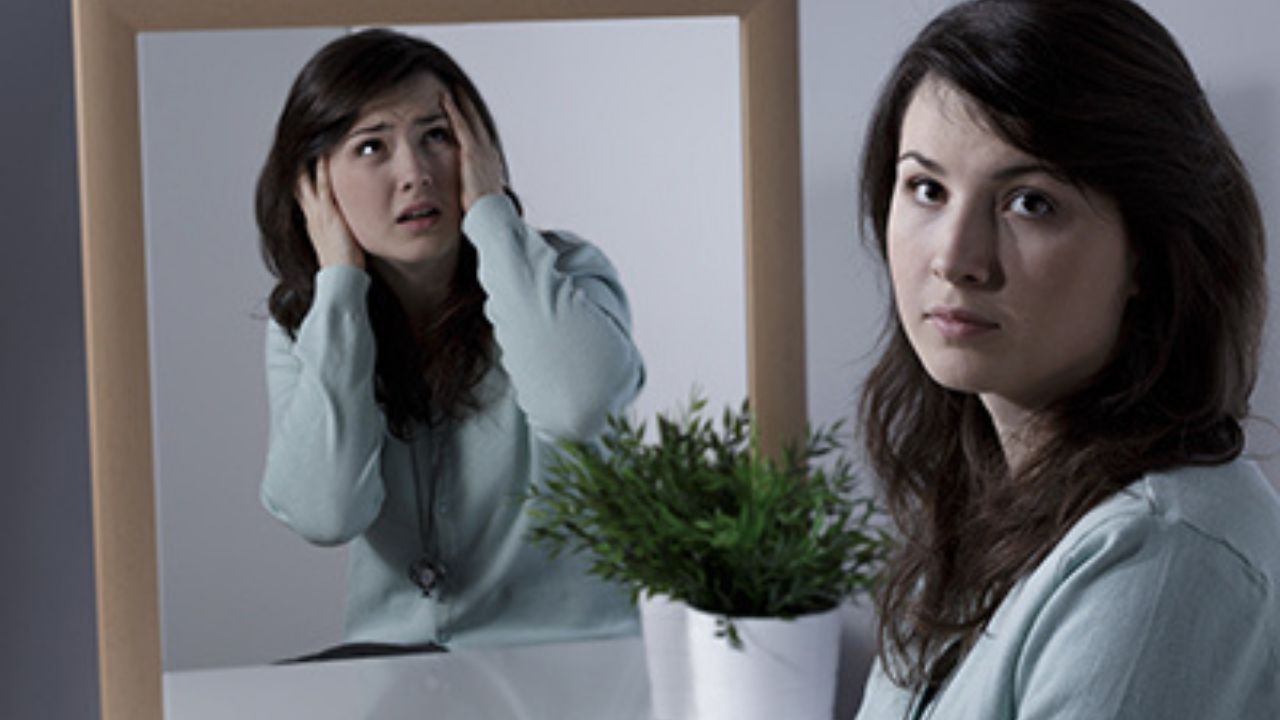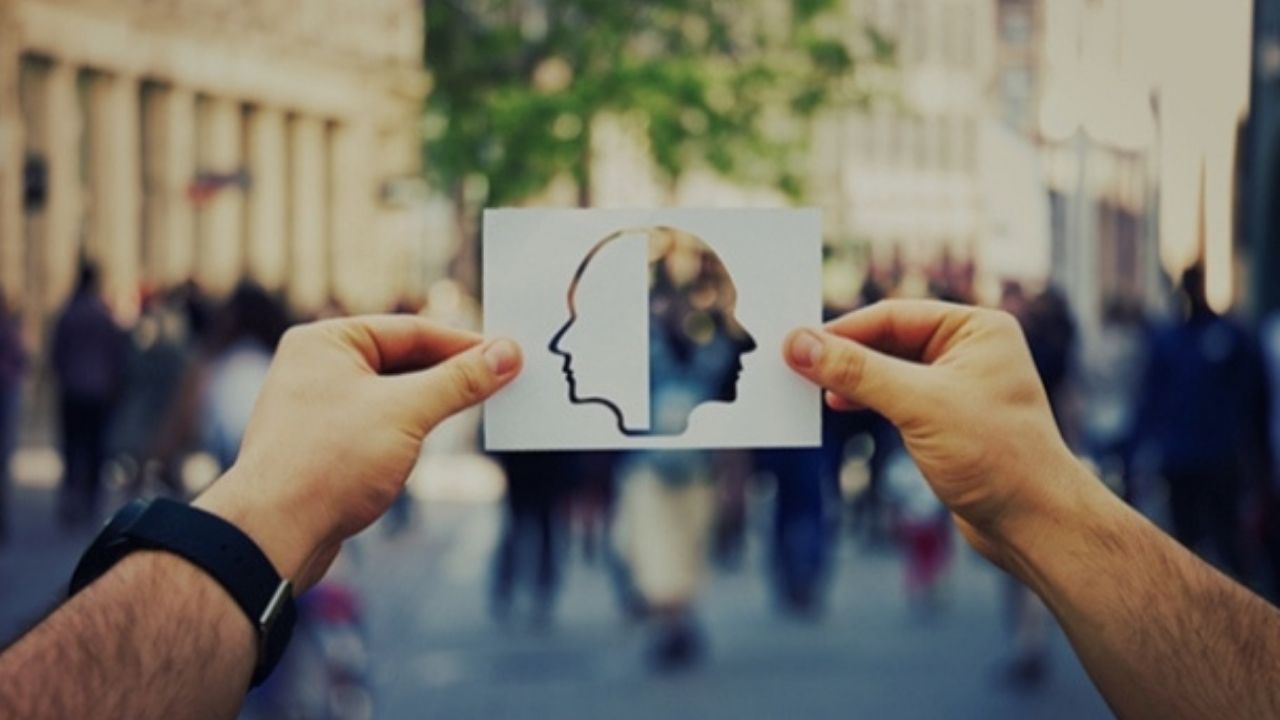
What is bipolar disorder?
Bipolar disorder (formerly known as manic-depressive illness) is a chronic mental illness characterized by more or less drastic swings in mood. It deteriorates the quality of life of those who suffer it and, many times, it interferes in their daily functioning, both in the academic and work environment, as well as in the family and social environment.
These changes in mood are not due to external stimuli or causes -although these may act on some occasions, as triggers, but originate because the mechanisms that regulate mood are altered and the person has lost control over their mood. This leads him to experience periods in which he feels exorbitant euphoria (mania), followed by other depressed or mixed patients. Often, one of the two states – manic or depressive – predominates over the other, although both tend to alternate with periods of some normality.
Who is affected?
Manic depressive disorder affects people of all ages. According to recent studies, it seems that the age of onset of the manic episode is clearly lower in men than in women, that is, it manifests earlier in them. Bipolar disorder usually begins around adolescence or early youth and continues throughout life, although there appears to be a decreased risk of onset after age 50. It is a relatively frequent disease and it can be stated that, in general, as mentioned in the 2012 Clinical Practice Guide on Bipolar Disorder published by the Ministry of Health, between 3% and 6% of the population develop some type of disease. mild form of bipolarity.
Fortunately, despite being a chronic disorder, it is one of the most treatable mental illnesses, both through drugs, psychotherapy or other therapeutic strategies as a complement or when the previous ones fail.
What are its causes and risk factors?
The exact cause for these mood alterations typical of bipolar disorder is unknown, but we could say that, in general terms and as a summary, it is considered that bipolar disorder is the result of the combination of a series of factors genetic, psychological and biochemical.
Regarding genetic factors, it seems that heredity could play an important role. Although the genetic connection has not been proven, Mental Health America (MHA) states that, according to different studies, 80% to 90% of people with bipolar disorder have relatives with some form of depression. Another hypothesis is that the tendency to develop the disease could be inherited, that is, a predisposition, which could later be triggered by environmental factors.
On the other hand, other research suggests that bipolar disorder may be caused by a biochemical imbalance, caused, in turn, by irregular hormone production and changes in the concentrations of brain neurotransmitters – chemicals in the brain that act as messengers. between neurons.
Psychosocial factors, such as negative life events or stressful events, which seem to be associated both with the development of initial symptoms and with subsequent exacerbations, may also be involved as triggers.
Similarly, bipolar disorder could be triggered by other factors such as some organic diseases, changes in the wake-sleep rhythm, the use of some drugs (corticosteroids, certain antidepressants) or the consumption of drugs such as alcohol, cocaine or amphetamines.
What symptoms characterize the phases of bipolar disorder?
Bipolar disorder is characterized by alternating manic or euphoric periods, which usually last for two weeks and four to five months, with other depressive periods or episodes, which last approximately six months.

The duration of the cycle is variable and also the frequency and the number of times of the episodes. For example, some bipolar disorder sufferers may experience a few in their lifetime, while others may have a form of rapid cycling and experience four or more cycles in a single year.
Other bipolar disorder pictures are of a mixed type and are characterized by simultaneously combining manic and depressive symptoms.
This mental illness usually begins with a phase in which the symptoms are more acute, which is followed by others of remissions and relapses. It should also be noted that only a small part of people with bipolar disorder alternate episodes of mania and depression in each cycle, since, in most patients, one of the two states predominates in the same cycle.
Next, we will know the characteristics and symptoms that define the different episodes that can be found within the clinical varieties of bipolar disorder:
1. Mania: This mood, characterized by euphoria, remains persistently elevated for between two weeks and four to five months and is accompanied by increased energy and hyperactivity. Exaggerated self-esteem and confidence, decreased need for sleep, greater talkativeness than usual, accelerated mental activity, brain drain, ease of being distracted, aggressive behavior, and extreme irritability can also occur.
In this episode of mania there may also be denial of the problem, neglect of physical appearance or use of extravagant clothing, as well as abuse of drugs – especially cocaine, alcohol, and sleeping drugs.
People in this state may find it difficult to perform their duties in the domestic, academic, or work environment. However, feeling energized, they tend to think they are in their best frame of mind.
This, combined with a higher level of activity, can lead to high-risk behaviors, which can have serious consequences. For example, compulsive shopping, dangerous sports, overly ambitious work projects, reckless financial investments, or promiscuous sexual activity.
In the most serious cases (manic psychosis), people in a manic state can present psychotic symptoms such as delusions or hallucinations of the persecutory or megalomaniac type (grandiose ideas about oneself such as having powers or having an important mission to fulfill). These symptoms can sometimes be difficult to differentiate from those of schizophrenia.
2. Hypomania: This is a moderate or less extreme variant of mania, lasting at least four days. Their symptoms are similar but of less intensity and among them would be at least three of the symptoms that define the episode of mania according to the MDE (Diagnostic and Statistical Manual of Mental Disorders, DSM-IV) classification used. for mental disorders.
In this episode of hypomania, the mood is elevated and there is also increased activity and less need for sleep. Some people function very well in this period, which leads them to not want to leave this state of mind and to deny the problem. In other patients, however, hypomania leads to easy distraction and great irritability.
3. Depression: Although some people experience periods of normal mood and behavior after a manic stage (euthymic mood), the depressive phase will eventually take place in many cases. For it to be considered as such, we must bear in mind that it is a depressed mood that lasts for most of the day and can last up to six months. This phase is characterized by a loss of interest in all or almost all daily activities, including sexual activity.
Other possible symptoms are tiredness or loss of energy, as well as the sensation of being slower; anxiety, apathy and pessimism ; increase or loss of weight or appetite; sleep disorders such as insomnia or an increased need for sleep (hypersomnia); restlessness and irritability; feelings of guilt or worthlessness; reduced ability to concentrate or make decisions; chronic pain or other symptoms not caused by physical illness; feelings of hopelessness or pessimism to recurrent ideas of death or suicide. In fact, there can also be suicide attempts.
And, as was the case in the manic phase, if a depressive episode is very severe, psychotic symptoms such as hallucinations may arise or feel worse than anyone else, extraordinarily guilty or even think that they have ceased to exist.
4. Mixed episodes: An episode is considered mixed when it combines manic and depressive symptoms. For example, the person may have hyperactivity, low spirits, irritability, insomnia, and ideas of guilt at the same time.
In this case, the prognosis is usually worse than in the case of the pure manic or hypomanic state. Furthermore, the risk of suicide during the mixed phases is much higher.
What types of bipolar disorder are there?
Depending on the episodes that prevail, bipolar disorders can be of several types. They all involve the changes in mood, energy, and activity levels we’ve seen before. Usually, most bipolar disorders can be classified into:
- Bipolar I disorder: includes at least one complete manic episode that lasts at least seven days and interrupts the normal social and work function of the person suffering from it or requires hospital care, as well as, usually, depressive episodes, which usually last at least two weeks. Mixed episodes can also be suffered, which, as we have seen, manifest with depressive and manic symptoms at the same time.
- Bipolar II Disorder: Major depressive episodes occur with at least one hypomanic episode, but there are no full manic phases. It is not a milder form, but is also associated with a great limitation of the patient’s functions.
- Unspecified bipolar or cyclothymic disorder: these are those that show bipolar characteristics, but do not coincide with any of the previous categories. However, according to some guidelines, today it is considered a mood disorder independent of bipolar disorder Other related and specified bipolar disorders: this category refers to those with symptoms of bipolar disorder that do not coincide with any of the recognized categories.
What consequences does this mental illness have?
Bipolar disorder is considered a serious illness, which often has a very negative impact on the patient’s health. According to data provided in the Clinical Practice Guide of the Ministry of Health, people with bipolar treatment have higher rates of mortality from any cause than in the general population. This is due both to the lifestyle factors associated with the disorder – which often include drug use and abuse – as well as higher rates of high blood pressure, obesity, smoking, or lung disease, among other conditions.
Regardless of the above, the probability of these patients to die by suicide is 15 times higher than in the general population – it is estimated that between 7% and 15% of patients with bipolar disorder commit suicide, according to the same source.
In addition, as we have already commented previously, most of the people diagnosed with this disease experience difficulties at work or in their personal relationships. Manic-depressive disorder is also a major cause of disability.
How is bipolar disorder treated?
For all these reasons, it is essential to treat bipolar disorder in order both to control the symptoms of the manic and depressive phases and to keep the patient’s mood stable for long periods of time and, in this way, increase the quality of life in the day-to-day of the patient.
The main line of treatment is based on the administration of drugs, which must be prescribed by a psychiatrist. Generally, mood stabilizing medications are used at first. One of the best known and most used is lithium, which can help reduce the severity of mood episodes if they appear or even prevent them from doing so. Its levels should be closely and periodically controlled by the doctor, since an excess in the blood can be toxic and a low level, ineffective. Sometimes, depending on the symptoms, it is necessary to add others, such as antidepressants, antipsychotics or others to facilitate sleep or reduce anxiety.
Also psychotherapy is a vital part of the treatment of bipolar disorder. It can be done individually, as a family or in a group and there are several options: interpersonal therapy, social rhythm therapy, cognitive behavioral therapy or psychoeducation, for example.
As for other treatment strategies, we can mention electroconvulsive therapy, used in some severe cases, when previous treatments have failed and rapid improvement is required or the situation in which the patient finds himself is life-threatening. On the other hand, regular exercise helps with depression and anxiety and promotes deep sleep, while keeping a diary that contemplates the evolution of the disease can help both the patient and the doctor for better monitoring and better adjustment of the treatment.
10 tips for living with bipolar disorder
Some healthy habits and lifestyle changes can help reduce symptoms and increase the quality of life for a person diagnosed with bipolar disorder:
- Establish balanced routines for sleeping, eating, and exercising.
Set regular hours for each of these activities and make an effort to respect them, since discipline reduces the risk of relapse and stability increases the balance of the person. If you have trouble sleeping, ask your doctor how to fix it. - Eat a balanced diet.
Try to avoid strict diets and go hungry, as it can increase your anxiety, which carries the risk of a new imbalance in your mood. - Get moderate exercise.
Getting around twenty minutes of moderate exercise three times a week benefits your mood. Do it following regular hours and without exceeding the fatigue threshold. - Learn to reduce stress.
It will help you to manage to dose your daily tasks and occupations: try to be organized and maintain a balance between work, leisure and family and social relationships, since excess activity can trigger episodes. Learn to relativize problems and stay calm in difficult situations. Also try to avoid unnecessary conflicts and discussions and also reserve moments in your day to day to carry out activities that you like and entertain. Another option is to enjoy nature as often as possible. - Give up alcohol and drugs.
These can act as triggers for new episodes. If you have a hard time leaving them on your own, ask for help. - Don’t stop the medication.
Not even if you feel better, since the sudden withdrawal of drugs or their use without medical supervision greatly increases the immediate risk of relapse. Consult your doctor before taking medications prescribed by another specialist or over the counter, as they could interfere with your treatment or act as triggers for new episodes. - Observe yourself.
Invest effort in becoming an expert on your disease, learn to manage it and recognize the signs that alert you that your mood is beginning to get out of control. This way, you can report them to your doctor. Keeping a daily record of your moods can help you achieve this, which will help you identify which factors in your daily life contribute to controlling the disease and which do not. - Create and maintain healthy personal relationships.
Try to surround yourself with people who are a positive influence and seek support, when you need it, from your friends and family. Trust them if they detect the start of new episodes, they may do so before you. - Do not make important decisions in periods of relapse or without being recovered.
Depression and euphoria are not good advisers for making sensible decisions. In these moments of relapse, it can be good to have a trusted person and establish a plan to help you make the most appropriate choice for you. - Join a support group.
It is a good idea because it will allow you both to share your experiences and know those of other people and to obtain information about your disease.
